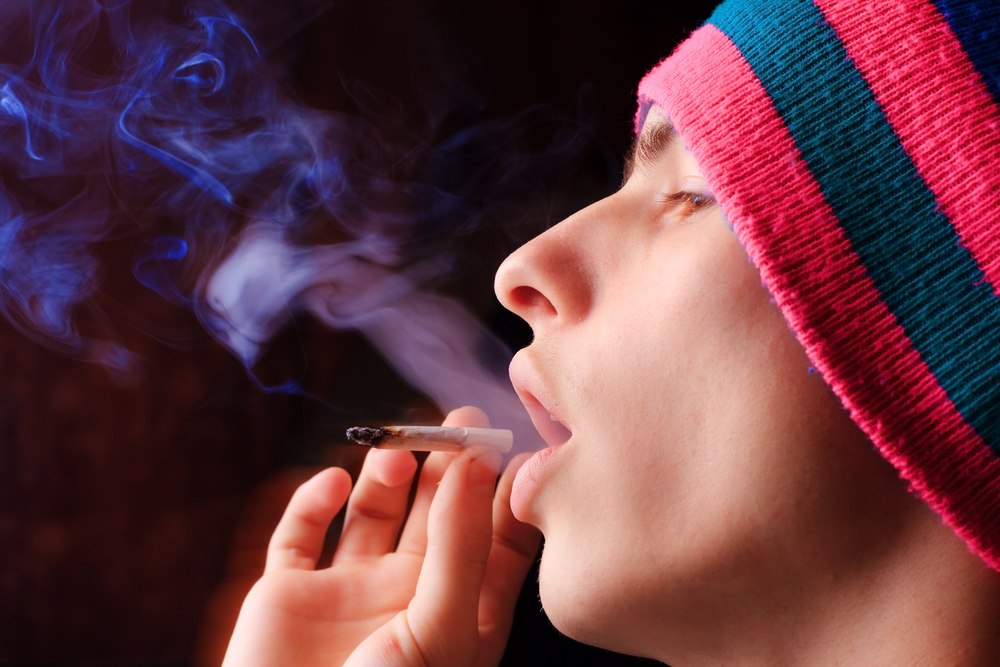Marijuana: Effects of Weed on Brain and Body

Marijuana is a combination of shredded leaves, stems and flower buds of the Cannabis sativa plant. Marijuana can be smoked, eaten, vaporized, brewed and even taken topically, but most people smoke it.
The intoxicating chemical in marijuana is tetrahydracannabinol, or THC. According to research from the Potency Monitoring Project, the average THC content of marijuana has soared from less than 1 percent in 1972, to 3 to 4 percent in the 1990s, to nearly 13 percent in 2010. Today, some retail marijuana has 30 percent THC or more. The increased potency makes it difficult to determine the short- and long-term effects of marijuana
In a 2010 National Survey on Drug Use and Health (NSDUH), 17.4 million people in the United States said they had used marijuana in the past month. Since then, many states have made it legal to use marijuana recreationally or medically. As of early 2017, 26 states and the District of Columbia have made the use of pot legal in one form or another.
A 2016 Gallup poll found that one in eight people smoke marijuana and 43 percent of U.S. adults admit to trying it.
Marijuana is usually smoked, according to the National Institute on Drug Abuse (NIDA). The Cannabis (called "pot," "weed," "grass," etc.) is typically spread on rolling papers and formed into a cigarette, often referred to as a joint, or a cigar-like blunt. Smoking releases the THC, which is absorbed into the blood stream through the lungs. Glass pipes, bubblers and bongs are other ways to smoke marijuana.
Marijuana can also be ingested in food, often a choice of those who are using medical marijuana. Aside from the popular "pot brownie," edible marijuana can be added to a number of foods, including candy, ice cream and butter. Some states that have legalized marijuana have issued rules for packaging and labeling "marijuana edibles."
Cannabis can be taken in liquid form, by brewing it as a tea. It can also be added to other beverages, including soda, milk and alcohol. Hashish is a resin made of the concentrated plant material. Other forms include capsules, oral sprays and topical oils.
Get the world’s most fascinating discoveries delivered straight to your inbox.
A relatively new method of inhaling marijuana is vaporization, a "smokeless" delivery system using devices such as e-cigarettes. By heating the Cannabis at lower temperatures, the plant's oils or extracts are released. Several studies suggest that "vaping" is better for health than smoking pot. Vaporized marijuana contains little other than cannabinoids, according to a 2004 study in the Journal of Cannabis Therapeutics. Users inhaled fewer toxic compounds and carbon monoxide when vaping compared with smoking marijuana, according to a 2007 study in the journal Clinical Pharmacology & Therapeutics. According to the Colorado Department of Public Health and Environment, there hasn't been enough research to conclude how much healthier vaping is than smoking unfiltered marijuana.
How marijuana affects the mind
Marijuana reaches the same pleasure centers in the brain that are targeted by heroin, cocaine and alcohol.
Depending on the quantity, quality and method of consumption, marijuana can produce a feeling of euphoria — or high — by stimulating brain cells to release the chemical dopamine. When smoked or otherwise inhaled, the feeling of euphoria is almost immediate. When ingested in food, it takes much longer, even hours, for the drug to signal the brain to release the dopamine, according to the National Institutes of Health.
Other changes in mood can occur, with relaxation frequently being reported. Some users experience heightened sensory perception, with colors appearing more vivid and noises being louder. For some, marijuana can cause an altered perception of time and increased appetite, known as the "munchies."
The impact can vary by person, how often they have used the drug, the strength of the drug and how often it has been since they have gotten high, among other factors.
"In some cases, reported side effects of THC include elation, anxiety, tachycardia, short-term memory recall issues, sedation, relaxation, pain-relief and many more," said A.J. Fabrizio, a marijuana chemistry expert at Terra Tech Corp, a California agricultural company focused on local farming and medical cannabis.
Other effects, according to the NIH, include:
- Feelings of panic and fear (paranoia)
- Hallucinations
- Trouble concentrating
- Decreased ability to perform tasks that require coordination
- Decreased interest in completing tasks
When coming down from the high, users may feel depressed or extremely tired. While marijuana use produces a mellow experience (users are sometimes referred to as "stoners") for some, it can heighten agitation, anxiety, insomnia and irritability, according to the NIH.
Marijuana and teens
When marijuana use begins in the teen years, it can have a significant impact on brain development, including decreased brain activity, fewer neural fibers in certain areas and a smaller than average hippocampus, which controls learning and memory functions.
According to a 2014 Northwestern Medicine study of teen marijuana users, memory-related structures in the brain appeared to shrink, a possible signs of a decrease in neurons. These abnormalities remained two years after the teen stopped using marijuana, indicating that the drug has long-term effects and look similar to brains of schizophrenics. Those who started using marijuana after 21 generally do not experience the same type of brain abnormalities as those who started using the drug earlier.
Long-term users report that they sometimes have trouble thinking clearly, organizing their thoughts, multitasking and remembering things. Sustained marijuana use can also slow reaction times in some individuals.
Another study by the University of Montreal published in the journal Development and Psychopathology in 2016 found similar results after researching almost 300 students. Those that started smoking around age 14 did worse on some cognitive tests than non-smokers. The study found that pot smokers also have a higher school dropout rate. Those that waited to start around age 17 did not seem to have the same impairments.
How marijuana affects the body
Marijuana smoke can cause many of the same respiratory problems experienced by tobacco smokers, such as increased daily cough and phlegm production, more frequent acute chest illnesses such as bronchitis, and a greater instance of lung infections, according to NIDA.
While it had been thought that there was a connection between marijuana smoking and increased risk of lung cancer, even those who are heavy marijuana users do not appear to be at greater risk for lung cancer, according to a 2013 study by Dr. Donald Tashkin, UCLA professor of pulmonary and critical care medicine.
A 2017 study by the Einstein Medical Center in Philadelphia found that those who used marijuana were 26 percent more likely to have a stroke than those who did not use marijuana. Those studied were also 10 percent more likely to have developed heart failure.
Marijuana can also raise heart rate by 20 percent to 100 percent shortly after smoking and the effect can last up to three hours, according to NIDA. Marijuana also can reduce sperm production in men and disrupts a woman's menstrual cycle, according to NIDA.
While it is widely thought that marijuana is not addictive, about 30 percent users may have some degree of marijuana use disorder, according to NIDA. Long-term marijuana users who try to quit experience cravings, irritability, sleeplessness, decreased appetite and anxiety — some of the same physical symptoms of those trying to quit other types of drugs or alcohol.
A 2016 study found a link between certain genetic markers and symptoms of marijuana addiction, suggesting that some people may have a genetic predisposition to marijuana addiction. That same study showed some overlap between the genetic risk factors for marijuana dependence and the genetic risk factors for depression, suggesting a possible reason why these two conditions often occur together, the researchers said.
You might not think marijuana and quizzes go together, but on the assumption that you arrived at this quiz sober, we pose some serious questions that will require your utmost attention and critical thinking skills. Good luck.
Pot Quiz: Test Your Marijuana Knowledge, Dude!
Additional reporting by Alina Bradford, Live Science contributor.
This article is for informational purposes only, and is not meant to offer medical advice.
Additional resources:




